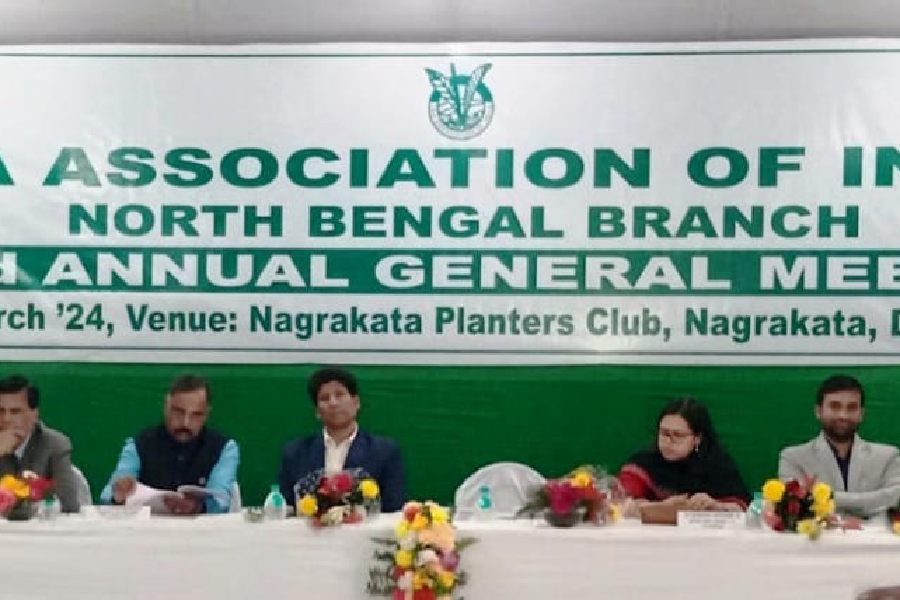A burgeoning small tea sector, stagnant auction prices and rising production costs are some of the major challenges confronting the traditional tea industry in north Bengal, said representatives of an association of tea planters on Saturday.
Sandeep Singhania, the president of the Tea Association of India (TAI), said that in the past two decades, the percentage of tea produced by small tea growers rose from 18 to 64 per cent in north Bengal.
“This increase in the production of tea in the small tea sector with a different cost structure compared to the big growers (tea estates) has led to a dichotomy in the tea industry as both sell tea in the same market,” said Singhania.
He was speaking at the 52nd annual general meeting of the north Bengal branch of TAI at the Planters’ Club in Nagrakata of Jalpaiguri on Saturday.
“The tea from small growers is less costly, which undercuts the market of organised estates ith a higher cost of production. That is why a level playing field is required for sustainability of tea estates,” he added.
Singhania pointed out that in the past 12 years the daily wage rate rose by 178 per cent from Rs 85 to Rs 250 while tea prices rose only by 67 per cent during the corresponding period.
“Also, the production cost is up because of an exponential increase in other inputs like fertiliser, coal and pesticides in the past two years. Several tea gardens in north Bengal are finding it tough to be economically sustainable. Many are selling teas below the actual cost of production,” said Singhania.
The industry, which employs over three lakh people in this region, needs incentives from central and state governments to tide over, TAI members felt.
“This can be in the form of interest subvention on capital borrowing, incentivising varieties of teas other than CTC tea and subsidies on power costs,” Singhania added.
Chinmay Dhar, chairman of the north Bengal branch of TAI, said that in 2023, 442.64 million kilos of tea were produced in Bengal.
“Of it, tea estates produced 34 per cent, which was 41 per cent a year ago. The rest came from the small tea sector. In 2023, the average price of teas in north Bengal was Rs 164 per kilo, which was Rs 175 in 2022. This clearly hints at the crisis the organised tea sector is facing,” said Dhar.










